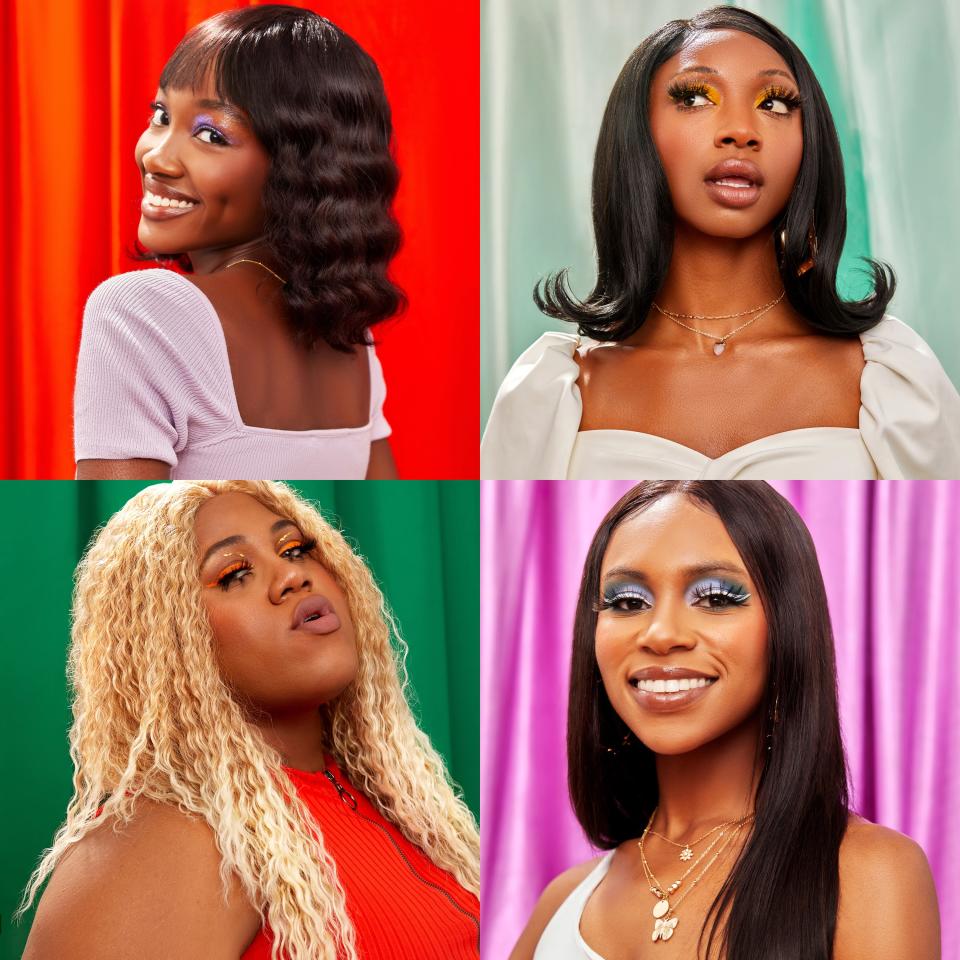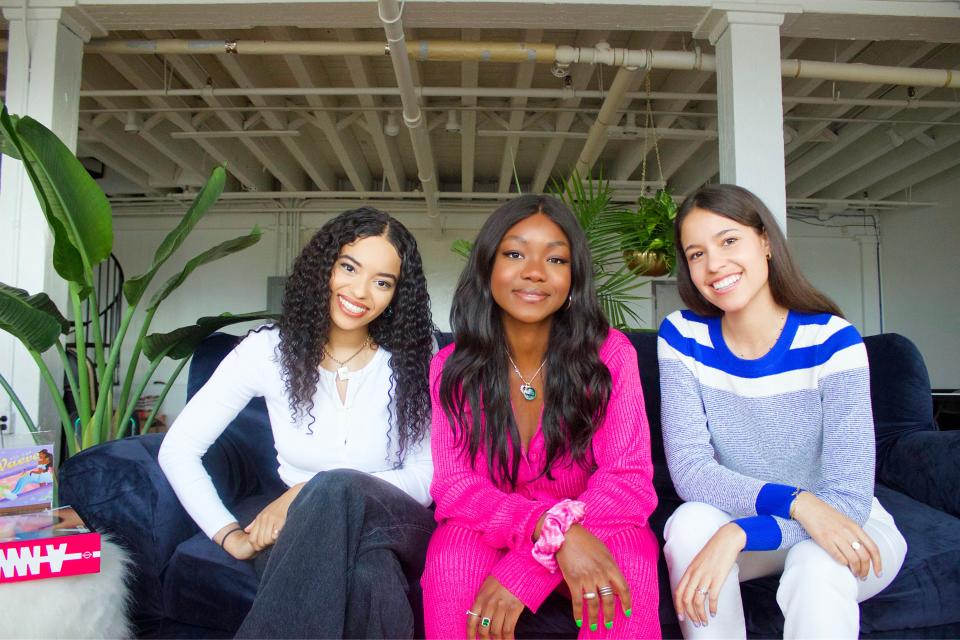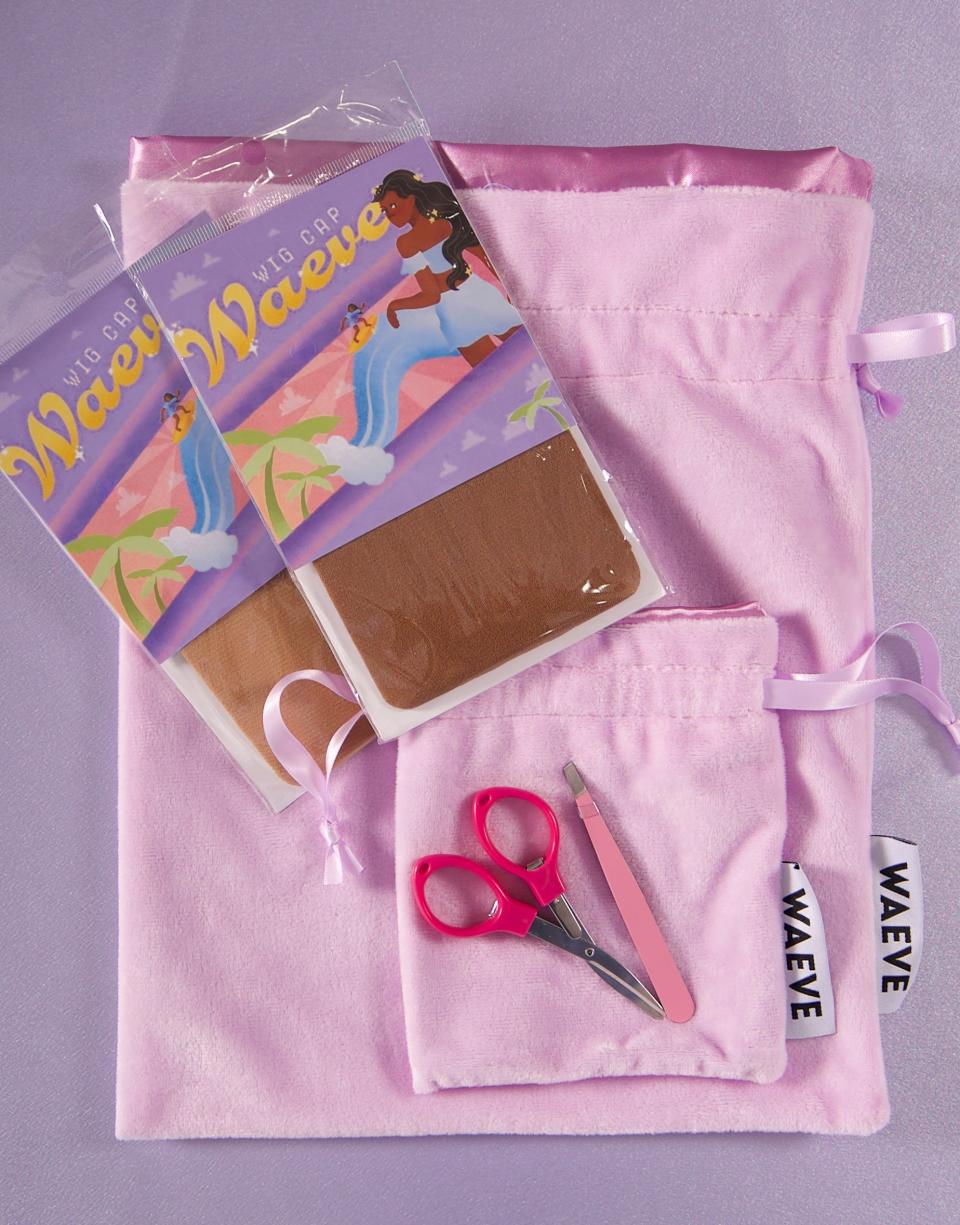Waeve Is Changing the Way Black Women Experiment With Wigs
In the fall of 2014, Mary Imevbore arrived at Williams College with a prelaw-packed schedule and a fresh set of box braids. Imevbore will be the first to tell you a lot can change in four years, but what about the lessons learned on campus, along with the friendships made? Those can form the foundation of a new chapter. For Imevbore, her time as an undergrad informed the business she would start come 2021. Today, she serves as the founding CEO of a start-up that fundamentally changes how Black women buy and style their wigs.
Launched this week, Waeve is an online destination for trend-forward hair units that are easy to order and beginner-friendly. Introducing new styles, or “drops,” each season, the Boston-based brand wants to provide Black women with a trusted place for buying contemporary synthetic and human hair wigs they can put on when they want to change up their look. To extend the life of their new hair, Waeve has also curated a lifestyle blog along with a gallery of online tutorials that walk clients through product must-haves for any wig, as well as tips for cleansing and styling.

When they arrived at Williams—a small liberal arts college in the Berkshires whose closest town has a population of 13,000—Waeve cofounders Imevbore and Tiiso McGinty both realized that caring for their natural hair was going to take some creative scrappiness. They turned to each other, then to the web.
“Tiiso and I instantly became best friends, and sort of bonded over the fact that we both had braids in,” says Imevbore. “We were both like, what are we going to do? We’re going to have to take them out at some point and there’s nowhere for us to get our hair done.” After a couple of years of YouTube tutorials, slicked-back space buns, and ponytails, the two discovered wigs. A passion for lace fronts, U parts, and customizable units was sparked.
Finding a wig online, however, is a notoriously complicated process. “I turned to the internet as any person our age would do when trying to shop for something. And it became so clear to me that there was no good place to buy wigs. I was, you know, being told to look at AliExpress, where a lot of people buy wigs and it’s like this huge marketplace—like millions of vendors with totally disparate pricing, you have no idea how to know what’s going to be good, and all of them are telling you they’re not going to arrive for like at least a month,” Imevbore recalls. Many vendors photoshop high-profile Black women to look like they’re wearing their wigs, marketing them as ambassadors, which can easily trap unknowing customers into buying poorly styled, fragile, and itchy units that are better suited in the trash than on someone’s head.
When Imevbore graduated in 2018, she, along with McGinty and their friend Susana Hawken held on to the desire to disrupt this system. As they went off to work in different fields—Imevbore had pivoted from prelaw to software engineering—the trio used the $15,000 they won through the Williams Business Plan Challenge to bring Waeve to life. After a couple of years of prototyping different models and pitching it to new investors, they raised $2 million in funding for Waeve, backed by industry heavyweights that include Henry Davis and Bryan Mahoney, former COO and CTO of Glossier, respectively, and the start-up was finally ready to make its debut.

The first collection is themed around days of the week, with a wig named after each one excluding Sunday. “We purposely left Sunday open, because we see Waeve as an extension of the natural hair movement,” says Imevbore. “Once I went natural, wigs became a great protective style for me. And so leaving Sunday out is our ode to the movement and the idea that, even as a wig company, we know that there shouldn’t be pressure to have to wear one every day. We just want you to wear your hair in a way that makes you feel good.”
I had a chance to try “Monday,” a curly, chin-length bob with bangs, and “Wednesday,” a retro, sleek lob that is parted to the side. The first time I put them on, I spent a good couple of hours in awe of the instant transformation. Who was this woman in the mirror? She was me, but the wigs had unlocked entirely new plotlines that I was eager to explore. That’s the power of wigs, or so I had heard.

As a relative newcomer to wig-atry, I was impressed with how easy it was to install the units thanks to the Wig Starter Kit that comes with each Waeve order. The hair feels light, which is essential if you’re looking to experiment during a summer in New York, styles easily (although you don’t need to do much, if I’m being perfectly honest), and is guaranteed to prompt a selfie session. As we begin to emerge into more social lives, Waeve invites a playful hair moment, making a bit of self-celebration all the more accessible.
Originally Appeared on Vogue

